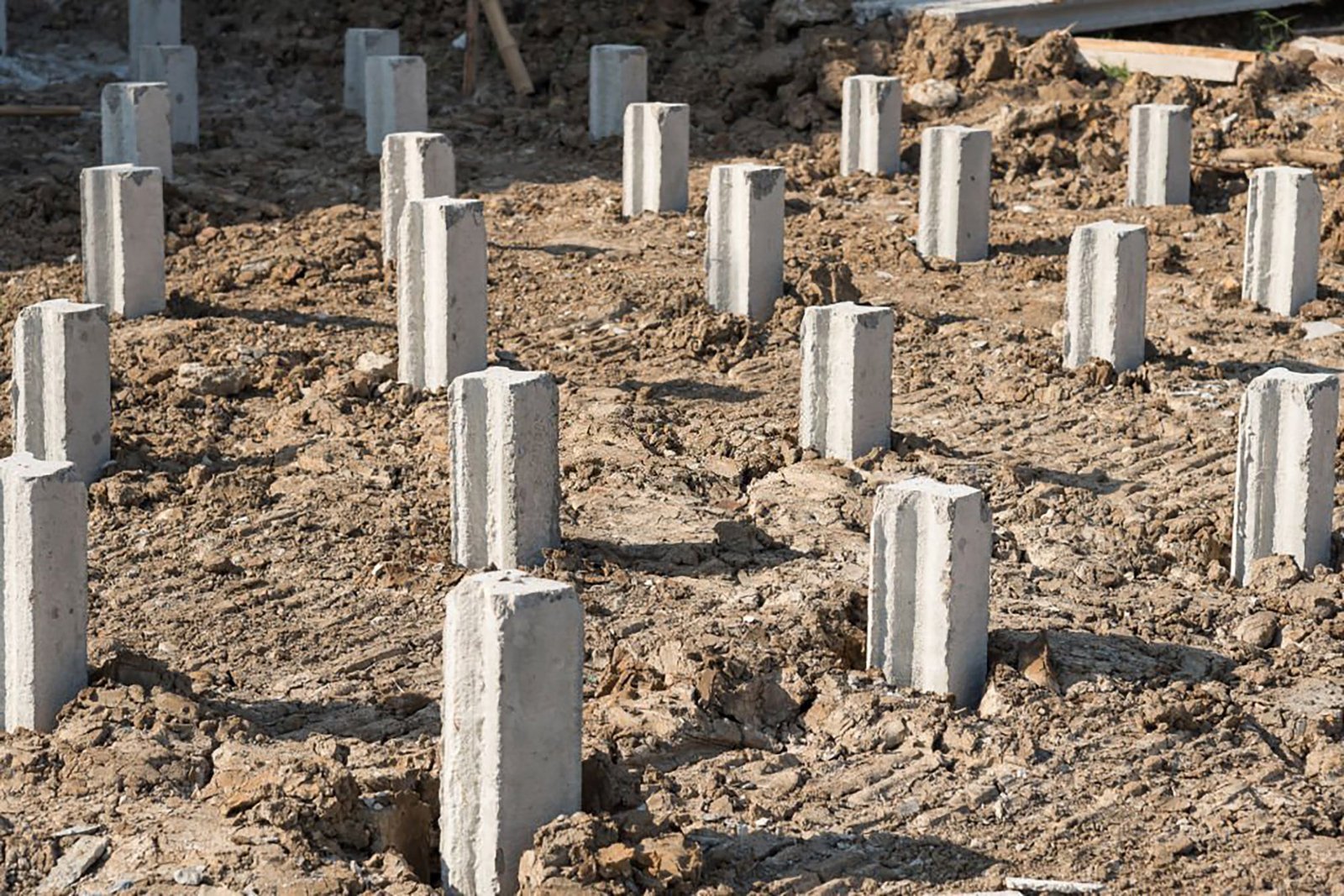Concrete piles are a reliable and widely used foundation system in construction projects of all sizes. Whether you’re building residential properties, commercial facilities, or infrastructure, concrete piles offer the strength, stability, and durability needed to support structures on various types of soil. In this article, we explore the purpose, types, advantages, and installation process of concrete piles, highlighting why they are a preferred choice for modern construction.
Concrete Piles
Concrete piles are long, slender structural elements made from reinforced or pre-stressed concrete. They are driven or drilled into the ground to transfer the load of a structure to deeper, more stable soil layers or bedrock. Concrete piles are an integral part of foundation systems for projects built on weak or unstable soils that cannot support traditional shallow foundations.
Purpose of Concrete Piles
The primary function of concrete piles is to distribute the weight of a structure evenly and securely to the ground. Key purposes include:
- Load-Bearing: Supporting heavy loads and preventing settlement.
- Stability: Providing stability for structures in areas with soft, loose, or expansive soils.
- Lateral Resistance: Offering resistance to lateral forces, such as wind and seismic activity.
- Water Table Management: Elevating structures above the water table to avoid waterlogging and foundation damage.
Types of Concrete Piles
Concrete piles come in various forms to suit different construction needs:
- Precast Concrete Piles:
- Manufactured off-site and transported to the construction site.
- Ideal for projects requiring consistent quality and quick installation.
- Cast-in-Situ Concrete Piles:
- Created on-site by pouring concrete into drilled or bored holes.
- Useful in areas with limited access or variable soil conditions.
- Driven Concrete Piles:
- Precast piles driven into the ground using hydraulic hammers.
- Provide excellent strength and stability.
- Bored Concrete Piles:
- Installed by drilling a hole, reinforcing it with a steel cage, and filling it with concrete.
- Minimise noise and vibration, making them suitable for urban areas.
- Composite Piles:
- Combine concrete with other materials like steel or timber for specific performance requirements.
Advantages of Concrete Piles
Concrete piles offer numerous benefits, making them a popular choice for foundation solutions:
- High Load Capacity: They can support heavy loads, making them suitable for large and complex structures.
- Durability: Concrete piles resist weathering, corrosion, and chemical attacks, ensuring a long service life.
- Versatility: Suitable for various soil types, including clay, silt, sand, and rock.
- Cost-Effective: Precast piles reduce installation time and labor costs, while cast-in-situ piles minimise material waste.
- Adaptability: Customisable in size, shape, and reinforcement to meet project-specific requirements.
Installation Process of Concrete Piles
The installation process for concrete piles varies based on the type of pile used. Below is a general overview:
- Site Assessment: Engineers conduct a soil investigation to determine the appropriate type and size of piles needed.
- Pile Design: Based on the findings, the piles are designed to meet load-bearing and environmental requirements.
- Preparation: The site is cleared, and equipment is mobilised.
- Installation:
- For Precast Piles: Piles are driven into the ground using hydraulic or diesel hammers.
- For Cast-in-Situ Piles: Holes are drilled, reinforced with steel cages, and filled with concrete.
- Testing: Load tests and integrity checks are conducted to ensure the piles meet design specifications.
- Completion: The foundation is prepared for the construction of the superstructure.

Applications of Concrete Piles
Concrete piles are used in a variety of projects, including:
- Residential Construction: Supporting homes and multi-story buildings in areas with weak soils.
- Commercial Projects: Providing a stable foundation for office buildings, shopping malls, and hotels.
- Infrastructure: Used in bridges, highways, and industrial facilities requiring strong load support.
- Marine Structures: Protecting docks, piers, and waterfront developments from tidal forces and erosion.
Key Considerations for Using Concrete Piles
- Soil Analysis: Understanding soil conditions is crucial for selecting the right type of pile and ensuring structural stability.
- Environmental Impact: Mitigate noise, vibration, and debris during installation, especially in urban or sensitive areas.
- Quality Assurance: Ensure materials and workmanship meet industry standards for safety and durability.
- Compliance: Adhere to local regulations and building codes governing pile design and installation.
Working with Experts in Concrete Piling
Choosing a reputable provider for your concrete piling needs is essential for project success. Companies like Southern Foundations & Piling specialise in delivering high-quality concrete pile solutions tailored to diverse construction requirements. With experienced professionals, advanced equipment, and a commitment to excellence, they ensure your foundation is built to last.










Leave a Reply